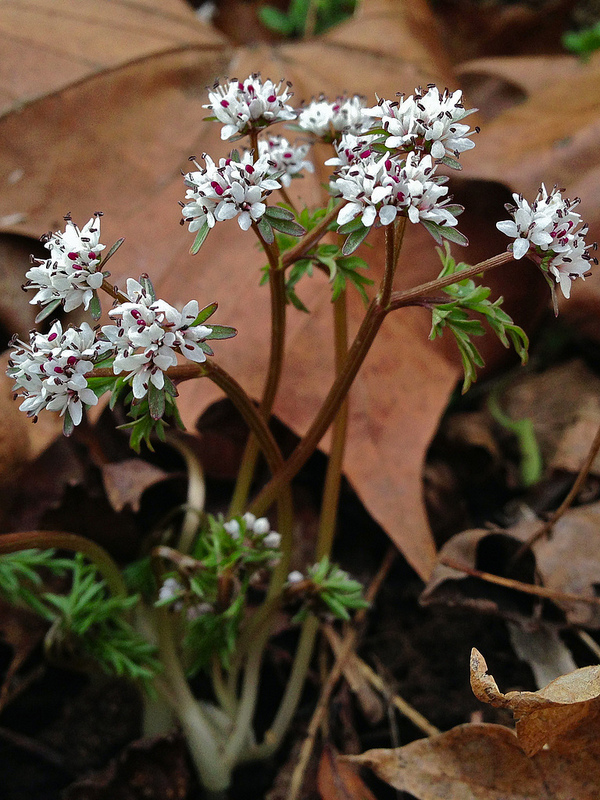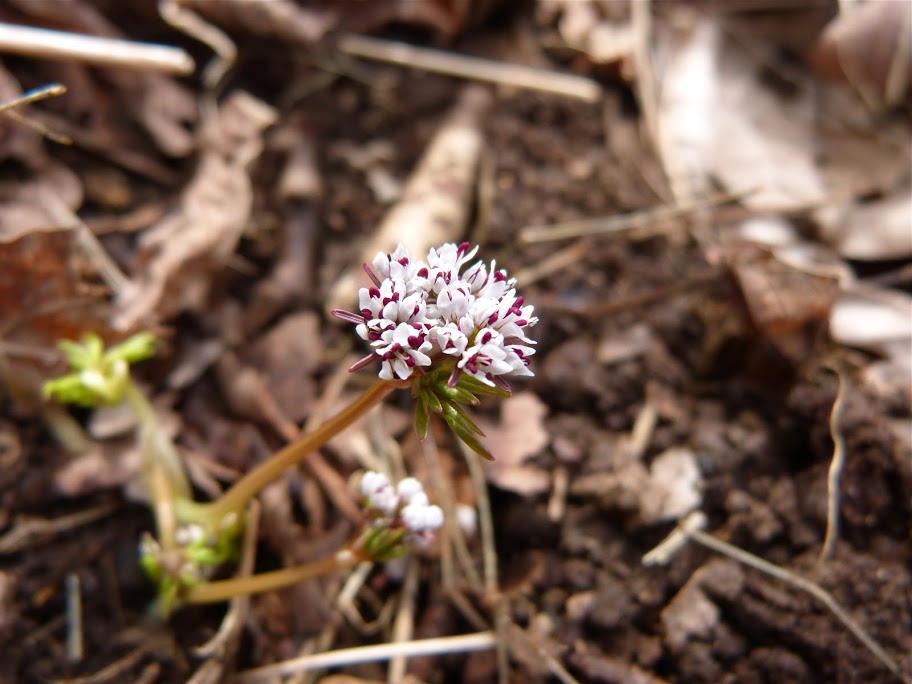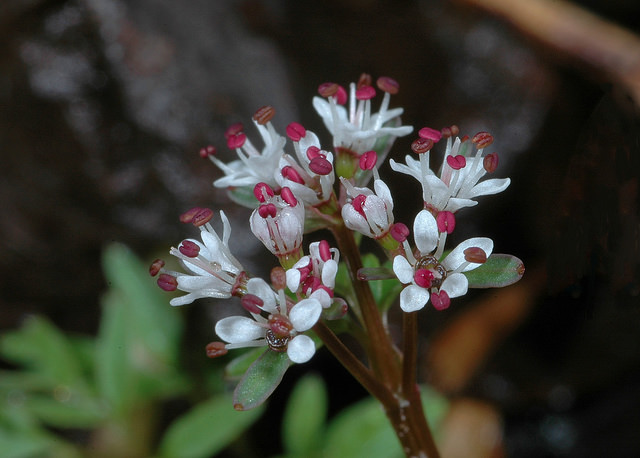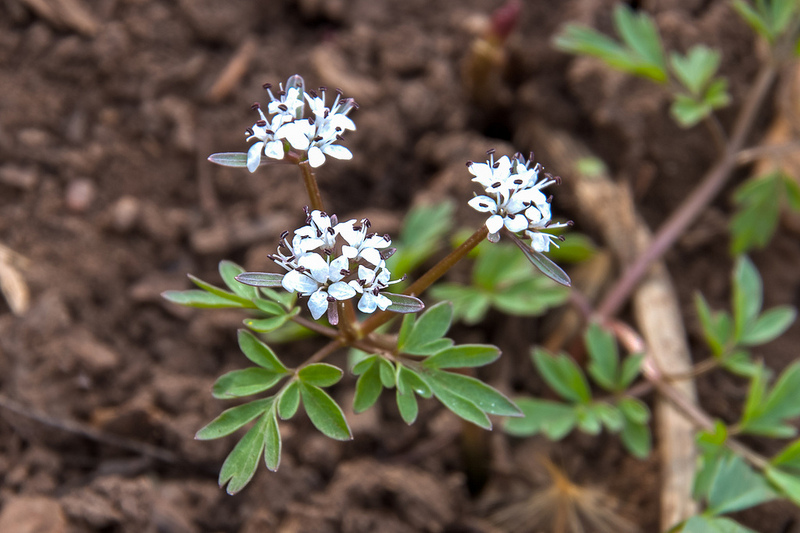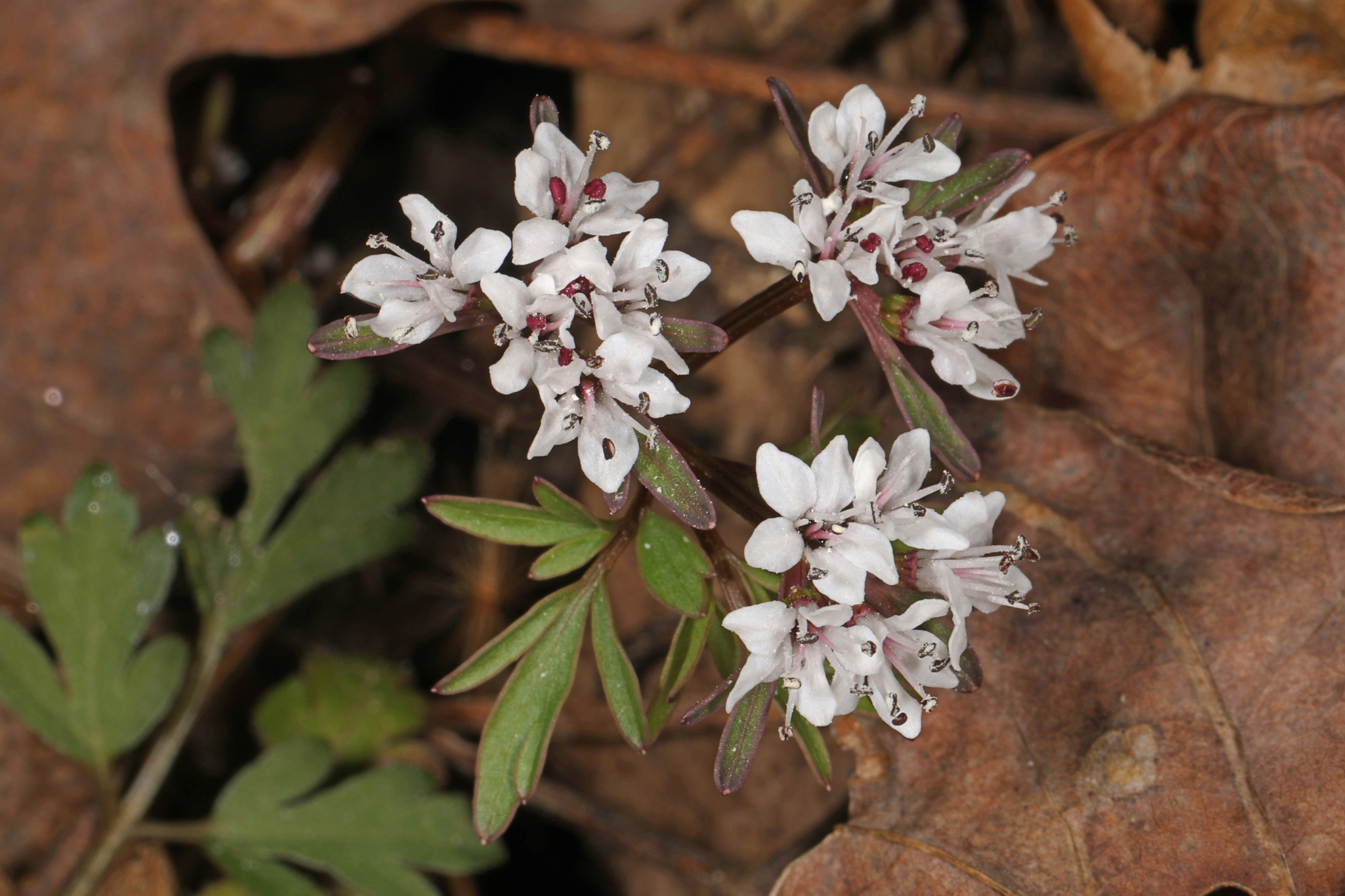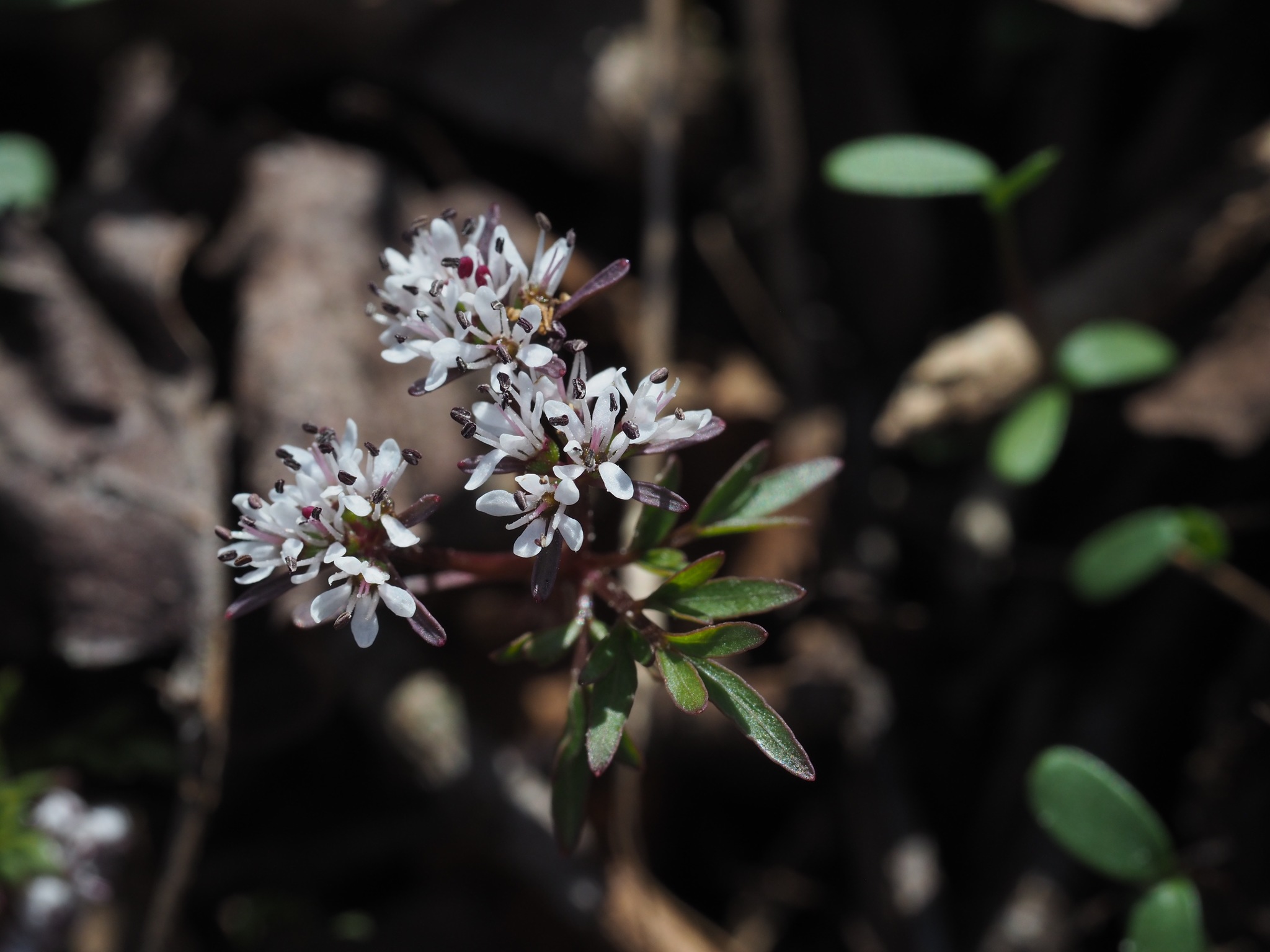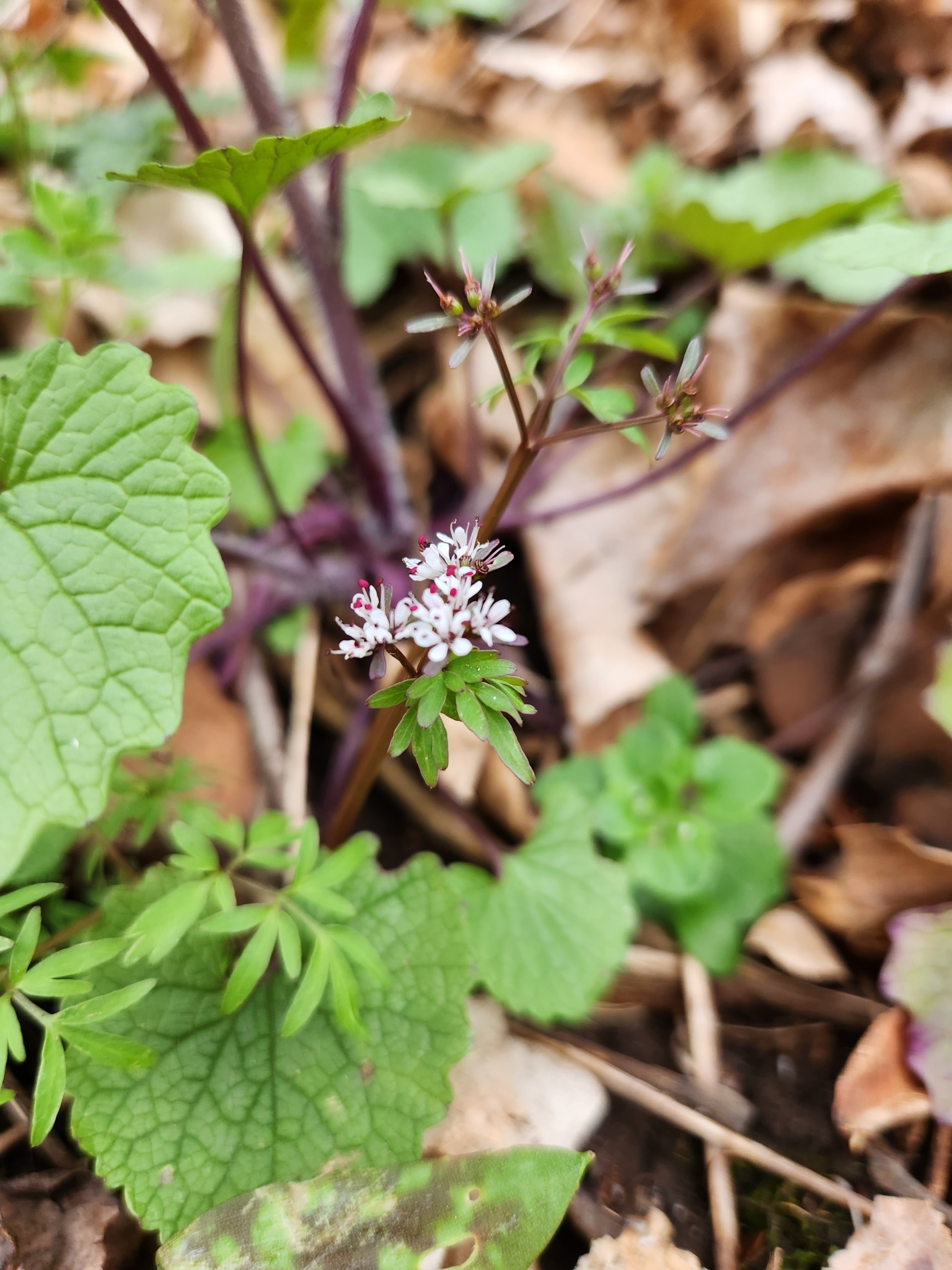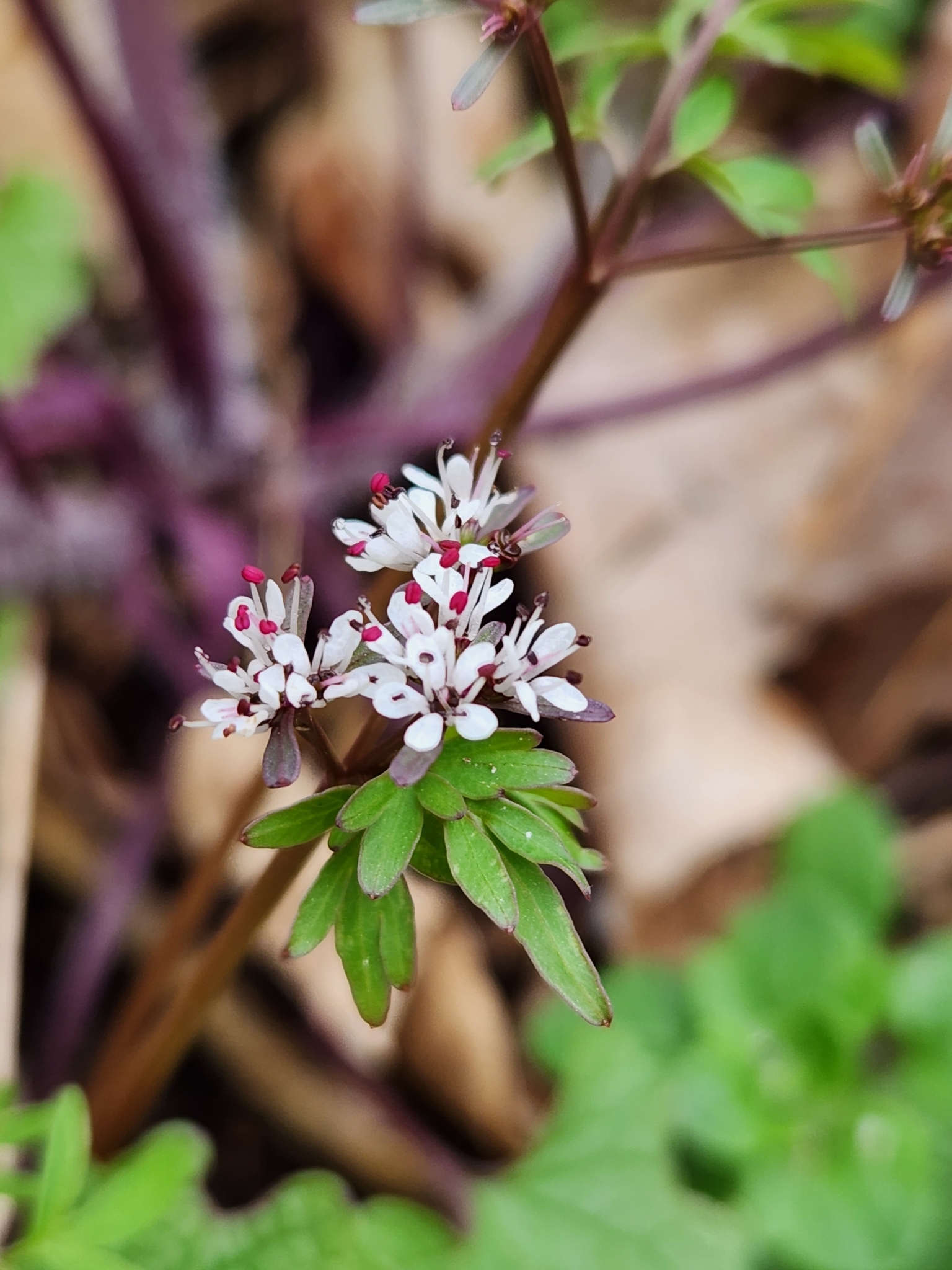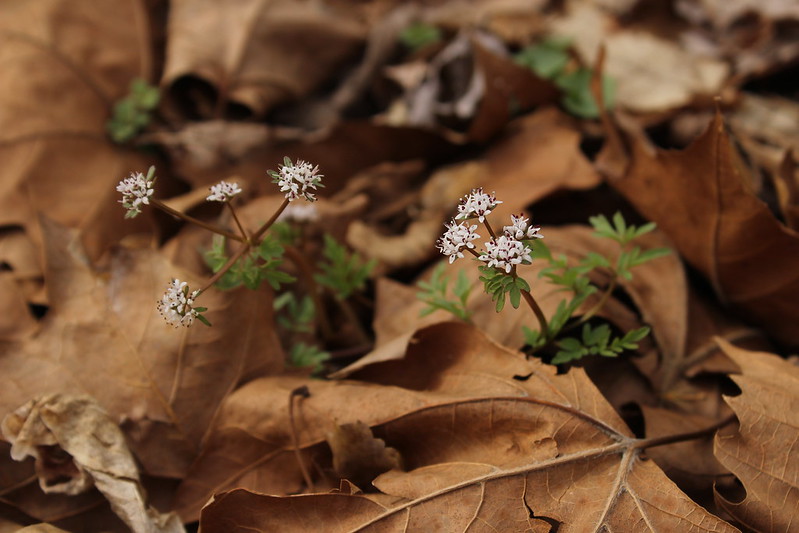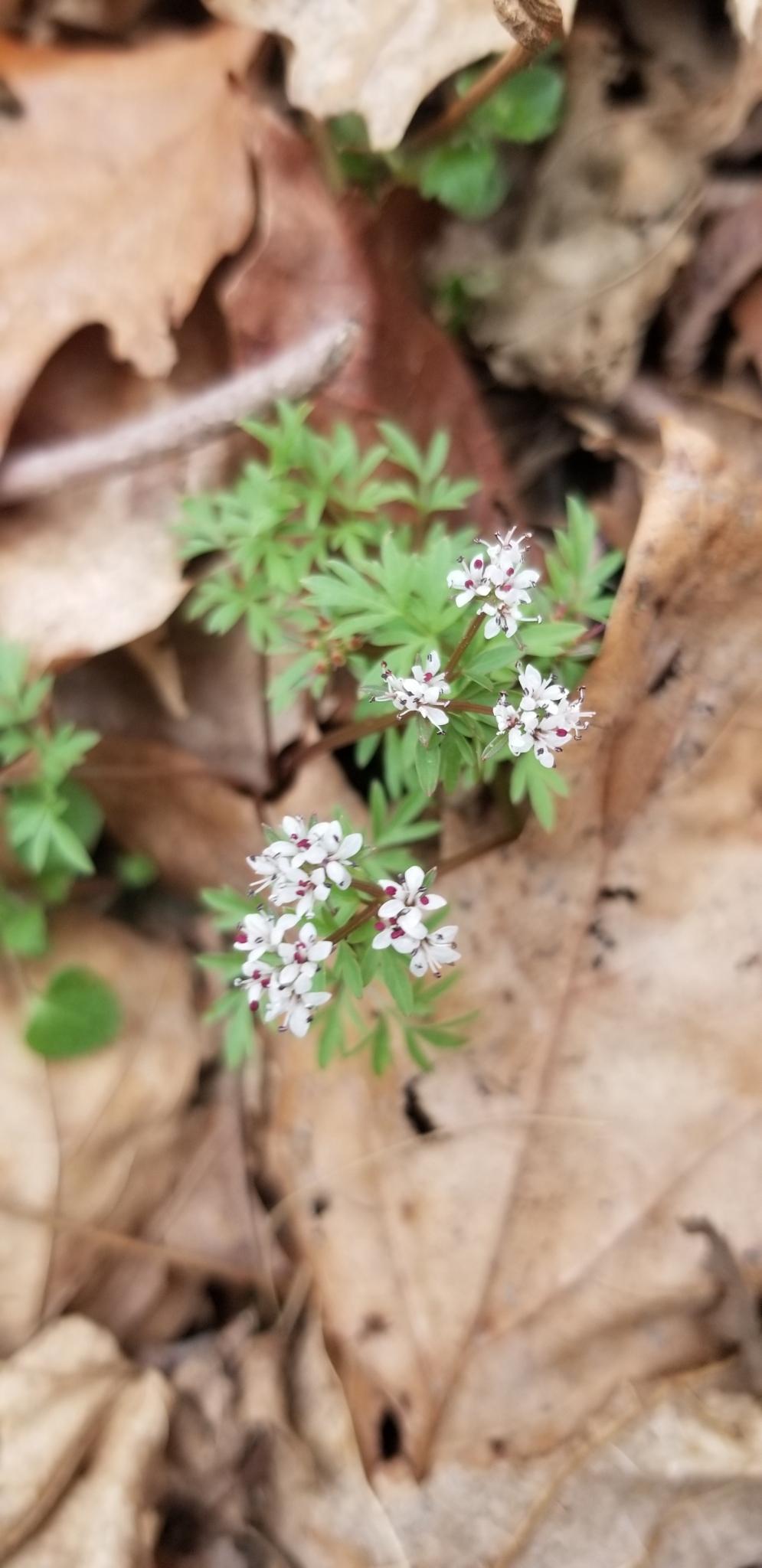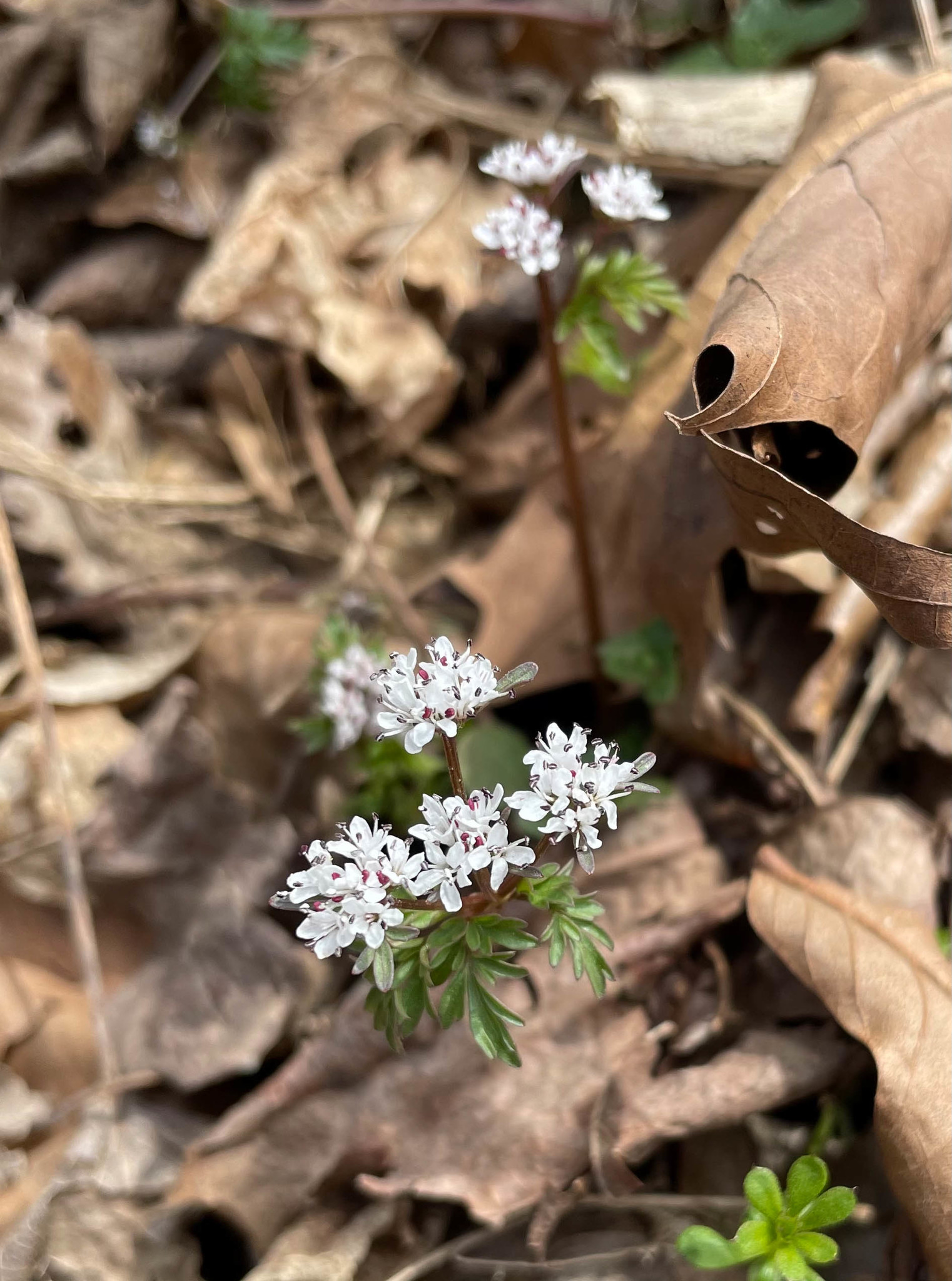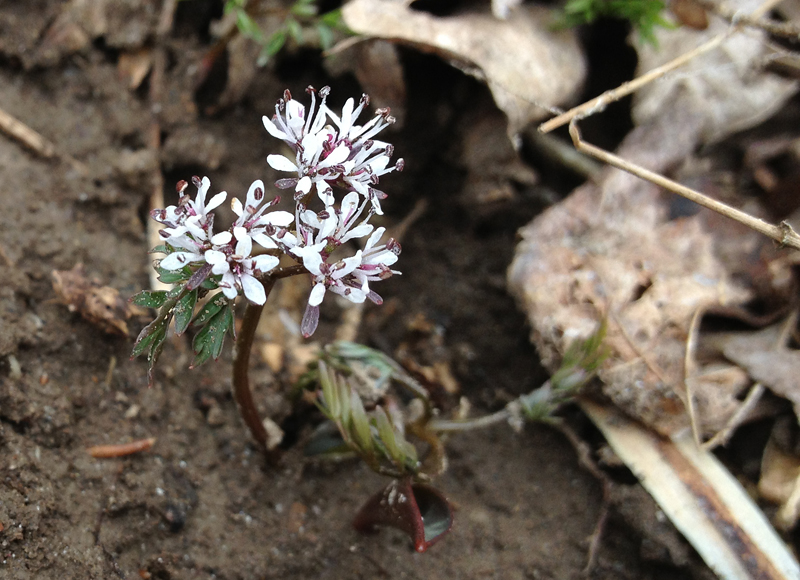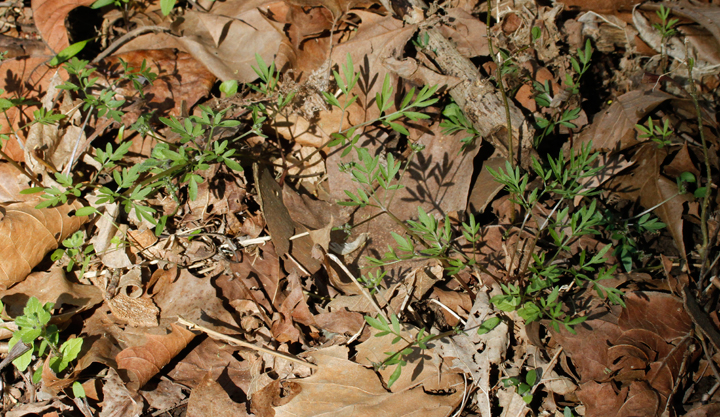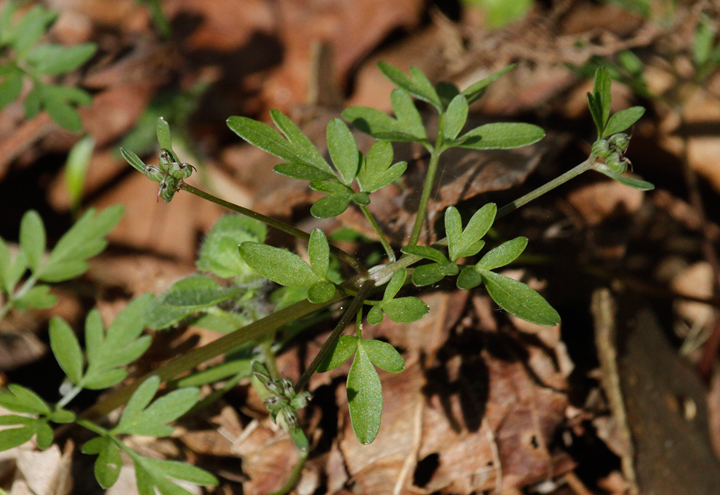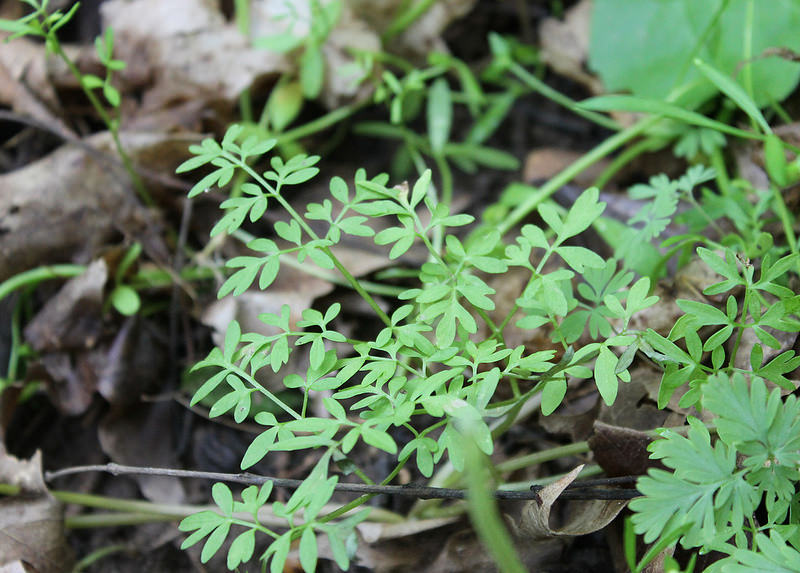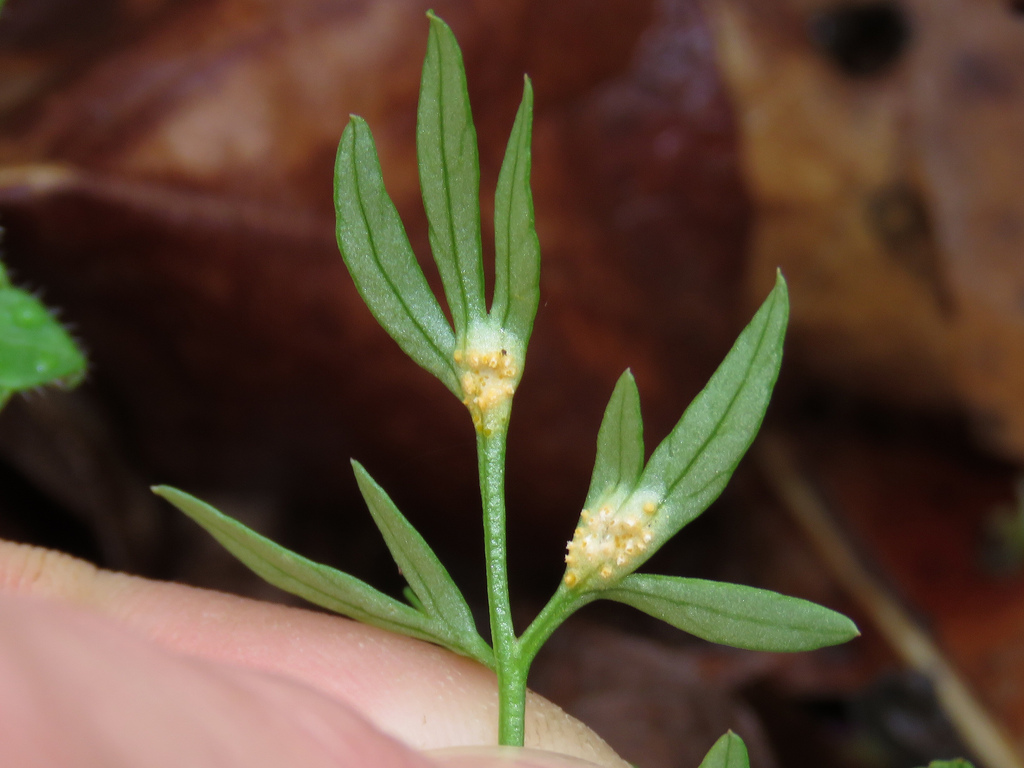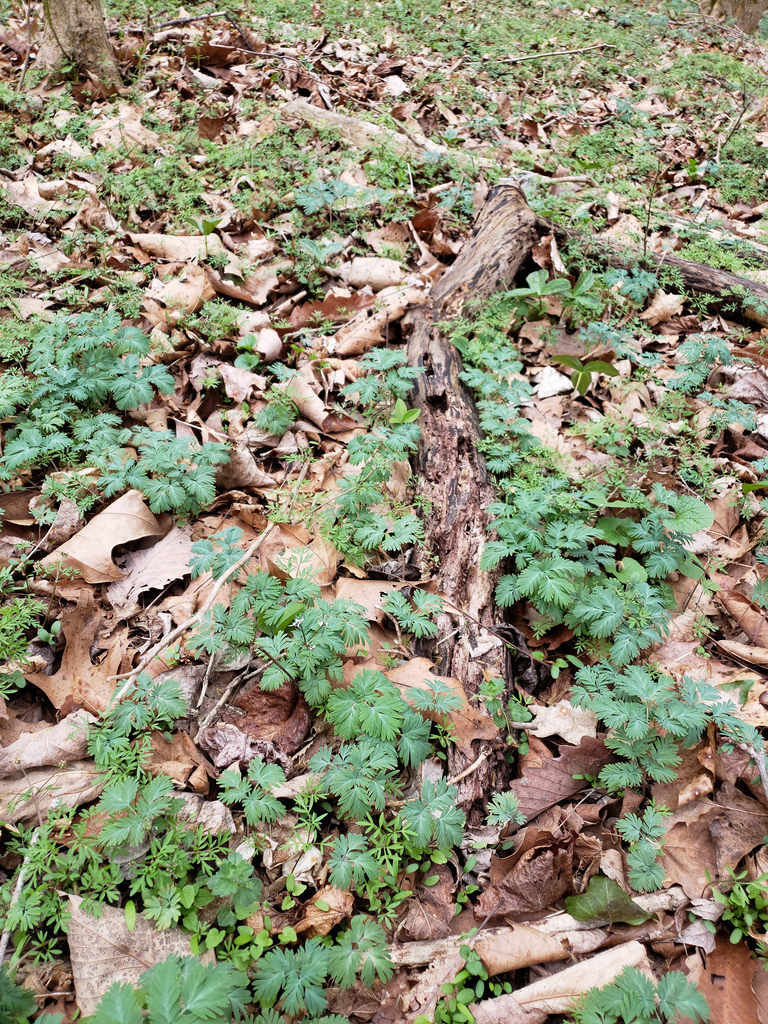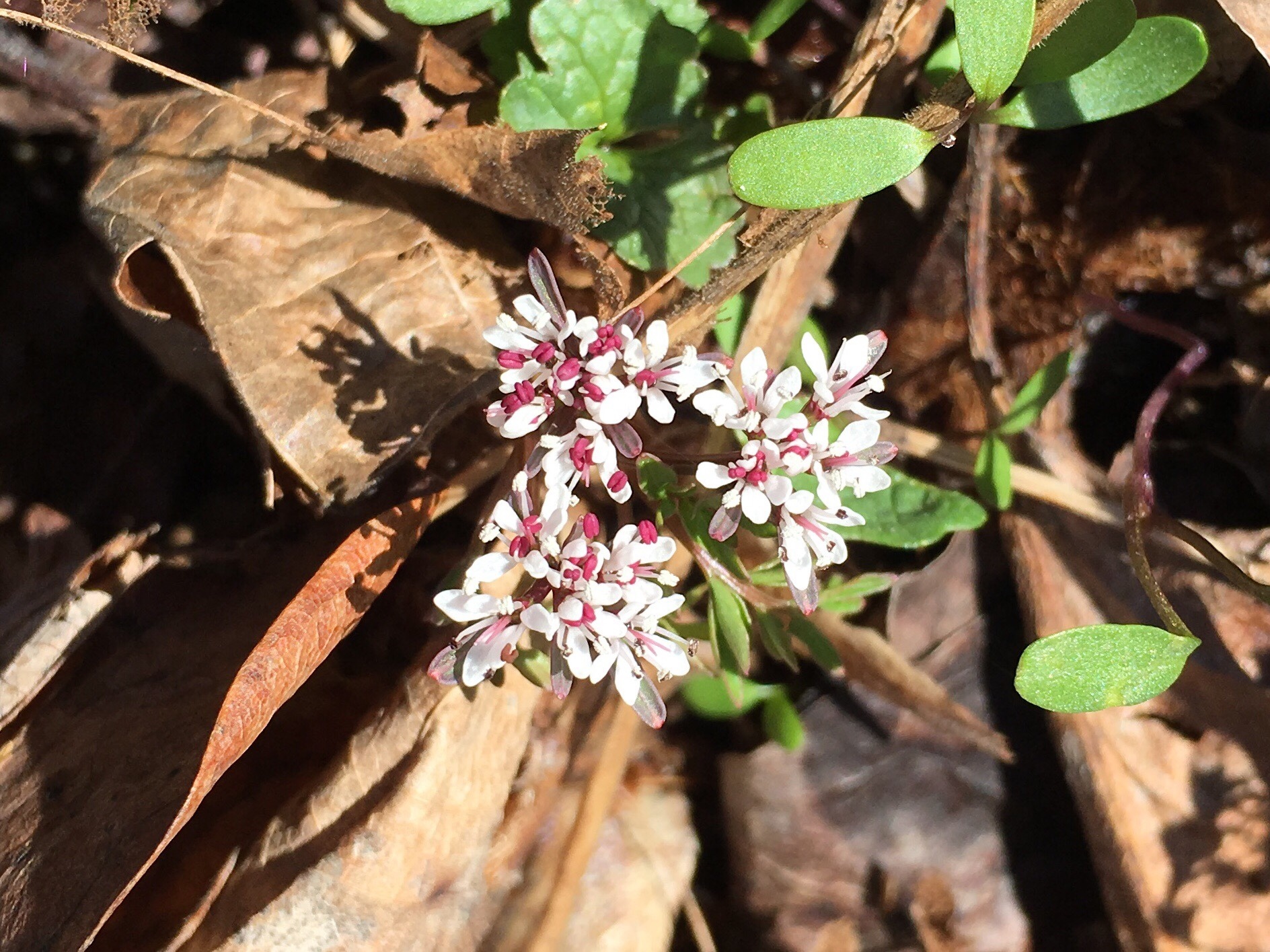Map Snapshot










172 Records
Status
The flowers of this early spring ephemeral live up to the plant's common name as one of the earliest spring bloomers, but the plant, and flowers, are so small that they often go unnoticed. Harbinger of Spring typically grows in rich soils of well-drained flood-plain forests and on mesic (somewhat moist) slopes in low-elevation forests (J. Hill/MNPS).
Relationships
Harbinger of Spring is the host of Puccinia erigeniae, an autoecious rust
Seasonality Snapshot
Source: Wikipedia
| Erigenia | |
|---|---|

| |
| Scientific classification | |
| Kingdom: | Plantae |
| Clade: | Tracheophytes |
| Clade: | Angiosperms |
| Clade: | Eudicots |
| Clade: | Asterids |
| Order: | Apiales |
| Family: | Apiaceae |
| Subfamily: | Apioideae |
| Tribe: | Erigenieae Rydb. |
| Genus: | Erigenia Nutt. |
| Species: | E. bulbosa
|
| Binomial name | |
| Erigenia bulbosa | |
Erigenia bulbosa, also known as harbinger of spring or pepper and salt,[2] is a flowering perennial plant in the family Apiaceae. E. bulbosa is the only species in the genus Erigenia and tribe Erigenieae.[3] This plant is known as harbinger of spring because it is one of the earliest blooming native wildflowers of rich forests in the mid-latitude United States. Throughout most of its range it blooms from late February through early April.[4]
Description
[edit]It is a small spring ephemeral reaching only 5–15 cm tall when in flower, and slightly larger afterwards. Each spherical bulb gives rise to a single purplish stem, which terminates in an umbel. The flowers have white petals and large dark-reddish anthers. The teardrop shaped petals are 3-4 millimeters long, widely spaced and do not touch each other. As is characteristic of the carrot family, the leaves of this plant are sheathed at the base and pinnately divided into many small sections.[5]
Distribution and habitat
[edit]Harbinger of spring is an occasional plant in rich hardwood forests of eastern North America. It is found as far north as central New York and southern Wisconsin, west to the western Ozarks, and south to central Alabama.[6] It is also found in extreme southern Ontario.[citation needed]
Ecology
[edit]Its typical associates include spring beauty (Claytonia virginica) and cut-leaf tooth wort (Cardamine laciniata). All of these early spring blooming plants are pollinated by solitary bees, and to a lesser extent, flies and honey bees. E. bulbosa has a small daily accumulation of nectar per flower (7–38 μg sugar/flower), but the presence of numerous, closely arranged, simultaneously blooming flowers in the umbel may increase the overall nectar incentive for the pollinators.[7] The nectar produced by E. bulbosa only contains the sugar fructose.[8]
Erigenia bulbosa does not form vesicular-arbuscular mycorrhizal associations with fungi, in contrast to most plants.[9]
These plants are protected in New York[10] and Wisconsin[11] as state endangered plants.
Uses
[edit]The bulb is edible both cooked and raw.[12] The Cherokee were known to chew this plant as medicine for toothaches; it is unknown what parts of plant they chewed.[13] This plant is sometimes used in native wildflower gardens throughout its range.[citation needed]
Gallery
[edit]-
Whole plant of E. bulbosa
-
E. bulbosa from Britton & Brown 1913
References
[edit]- ^ NatureServe (1 March 2024). "Erigenia bulbosa". NatureServe Network Biodiversity Location Data accessed through NatureServe Explorer. Arlington, Virginia: NatureServe. Retrieved 24 March 2024.
- ^ Voss, Edward G.; Reznicek, Anton A. (2012-02-08). Field Manual of Michigan Flora. University of Michigan Press. p. 331. ISBN 978-0-472-11811-3. Retrieved 24 March 2024 – via Google Books.
- ^ Downie, Stephen R.; Spalik, Krzysztof; Katz-Downie, Deborah S.; Reduron, Jean-Pierre (1 August 2010). "Major clades within Apiaceae subfamily Apioideae as inferred by phylogenetic analysis of nrDNA ITS sequences". Plant Diversity and Evolution. 128 (1): 111–136. doi:10.1127/1869-6155/2010/0128-0005.
- ^ "Erigenia bulbosa (Harbinger of Spring): Plant Phenology". iNaturalist.org. Retrieved 2018-10-19.
- ^ "Harbinger-of-Spring (Erigenia bulbosa)". www.illinoiswildflowers.info. Retrieved 2022-01-26.
- ^ USDA PLANTS Database: Erigenia bulbosa
- ^ Dailey, Theresa Bordenkecher; Scott, Peter E. (2006). "Spring nectar sources for solitary bees and flies in a landscape of deciduous forest and agricultural fields: production, variability, and consumption". Journal of the Torrey Botanical Society. 133 (4): 535–547. doi:10.3159/1095-5674(2006)133[535:SNSFSB]2.0.CO;2. JSTOR 20063873. S2CID 83554334.
- ^ "Dailey, et al. 2003. Nectar rewards of co-flowering spring herbs in woodlands and adjacent agricultural fields. Abstracts: 87th Annual Meeting of the Ecological Society of America". Archived from the original on 2012-02-06. Retrieved 2007-03-22.
- ^ Brent G. DeMars (1996). "Vesicular-arbuscular mycorrhizal status of spring ephemerals in two Ohio forests" (PDF). The Ohio Journal of Science. 96 (4/5): 97–99. hdl:1811/23719.
- ^ "193.3 Protected Plants". New York Codes, Rules, and Regulations. Retrieved 21 September 2022.
- ^ "Harbinger-of-spring". Wisconsin Department of Natural Resources. Retrieved 21 September 2022.
- ^ Plants for a Future Database: E. bulbosa.
- ^ Dr. Moermann's Ethnobotanical database: E. bulbosa
